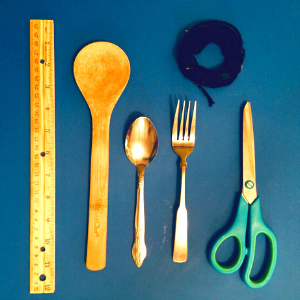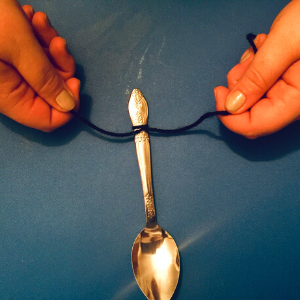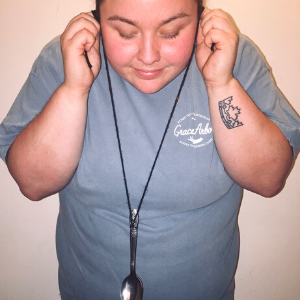Music Mondays: Sound Waves
What are sound waves? How do they travel? Let’s figure it out together! Here’s what you’ll need:
Materials & Instructions
A metal spoon
A metal fork
String or yarn
A wooden or plastic spoon
A ruler or measuring tool
STEP 1. First, cut a section of string or yarn that is about four feet long.
STEP 2. Tie the spoon in the middle of the string or yarn; tie just below the handle of the spoon so that the bowl of the spoon is hanging down.
STEP 3. Wrap one end of the string around one of your pointer fingers and the other end around your other pointer finger.
STEP 4. Hold each string-wrapped pointer finger next to each ear. Don’t put your fingers or the string inside your ears. Lean forward so the spoon and string do not touch your body.
STEP 5. Have another person gently hit the metal spoon with the plastic/wooden utensil. What do you hear?
What Happened?
We learned in a previous post that sound is caused by vibrations. Normally, those vibrations travel in waves or patterns (called sound waves) through the air until they eventually reach our ears. With this experiment, however, the string acted as a sound conductor and allowed those sound waves to travel up the string and straight into your ears.
If you were the person hitting the spoon, you most likely heard a quick clinking sound from the metal. If you were the person holding the string, then you most likely heard a much richer and longer sound! In addition to acting as a sound conductor, the string allowed the sound waves to reverberate, which means that you probably heard that rich sound repeating for a while like an echo. This is like a private concert – only the person holding the string to their ears can hear the gong-like sounds traveling up from the spoon!
Keep exploring sound waves! What happens if you wrap the middle parts of the strings around your fingers instead of the ends? How does that change the sound? What happens when you tie a metal fork in the middle instead of a spoon, and hit the tines?
Vocab Words
Sound: Vibrations that travel through the air until they reach someone’s ear.
Sound Waves: Sound vibrations travel in waves (or patterns) of energy through the air or other conductors.
Conductor: A type of material that allows energy to travel through it. Our string acted as a conductor and allowed the energy from the sound waves to travel through it.
Reverberate: When a sound repeats several times as an echo.







